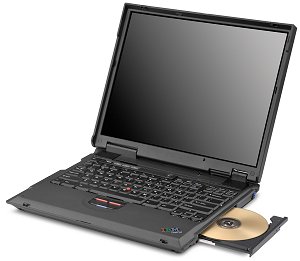

The ThinkPad came with Windows98SE installed, and though I tend towards the extreme side of Linux zealotry I decided to leave the beast installed for the time being so I could watch DVD's and use the Hibernation. For all Partitioning issuses i dicided to use PartitionMagic 5.0x from DOS. So I shrank the Windows partition down:
The following was sent to me by Stephen
Ward:
Unfortunately, the LM 8.0 CD comes with the 2.4.3 kernel, and this version has a bug that prevents the mouse on a Thinkpad from being detected. So it was necessary to run a text-mode installation. This kernel bug can be avoided by using either an older version (a 2.2.X image is supplied as an alternative on the Mandrake 8.0 CD), or using a newer version (I built 2.4.5 from source).
Otherwise, the instructions for LM 7.2 still hold; select a generic 1400x1050 LCD panel, but do NOT test the X configuration, and do NOT select a graphical login (yet). Choose the XFree86-4.0.3 X server.
Once the install completes, login to the console as root. Install the 2.4.5 (or later) kernel sources, and rebuild the kernel. Use the config file in /boot/config as a starting point for the kernel configuration. Once the kernel is rebuilt and installed, make sure it is added as a LILO option.
Finally, change the following in the Xwindows config (/etc/X11/XF86Config-4):
1. Change HorizSync to "30-100"
2. Change VertRefresh to "50-100"
3. Add "1400x1050" to the start of each of the Modes in the Screen
section.
Otherwise, the default XF86Config-4 works fine.
Reboot the machine, and select the 2.4.5 kernel in LILO. It will detect the mouse as "new" hardware during boot.
The 5.99b version of the ltmodem driver works fine. Sound card
and APM are correctly detected, as is the USB and PCMCIA hardware (although
I have no USB devices hooked up to test this).
Once the install completes, login to the console as root. Install the 2.4.5 (or later) kernel sources, and rebuild the kernel. Use the config file in /boot/config as a starting point for the kernel configuration. Once the kernel is rebuilt and installed, make sure it is added as a LILO option.
Finally, change the following in the Xwindows config (/etc/X11/XF86Config-4):
1. Change HorizSync to "30-100"
2. Change VertRefresh to "50-100"
3. Add "1400x1050" to the start of each of the Modes in the Screen
section.
Otherwise, the default XF86Config-4 works fine.
More hints you find here from Alan Shutko.